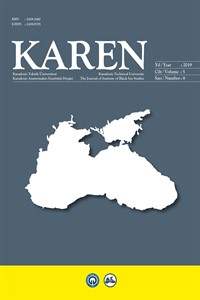MÖ I. BİNYILDA DOĞU KARADENİZ’İN YEREL TOPLULUKLARI
LOCAL COMMUNITIES IN SOUTH-EASTERN BLACK SEA IN THE FIRST MILLENNIUM BC
Author(s): Serkan DemirelSubject(s): Archaeology, Ancient World
Published by: Karadeniz Teknik Üniversitesi - Karadeniz Araştırmaları Enstitüsü
Keywords: First Millennium BC; South Eastern Black Sea; Chalybes; Tibarenians; Mossynoecians; Drilae; Macrones;
Summary/Abstract: There is very limited information about the prehistoric periods of the South Eastern Black Sea region. In ancient sources, information about the region is very limited and there are few archaeological studies in the region. In addition, archaeological studies mainly focus on the Classical Period and beyond. As a result, the South Eastern Black Sea is perhaps the least known region in Anatolia. However, it should not be considered that there is no community in the region during these periods. The earliest sources that can be directly attributed to the South Eastern Black Sea region are Greek and Latin texts dating back to the period of Greek colonization, which began in the region since the second quarter of the first millennium BC. According to the information obtained from these texts, the region was settled by a number of communities that could be called indigenous probably before and during the period of colonization. The first material finds to be associated with these communities, which are known only from written sources, were obtained through some recent archaeological studies in Giresun and Trabzon.In the light of the available data, it is possible to estimate the geographical distribution of the local communities that have been informed of the existence of the Eastern Black Sea region since the second half of the first millennium BC. According to this data, Chalybes in the inner part of Samsun-Ordu region and east of this community from the coastline to the east Tibarenians, Mossynoecians, Drilae and Macrones in the mountainous inner parts of Trabzon and a number of small groups to the east of this region constitute these indigenous communities. In addition, it is understood from the social and economic perspective that although these communities have different characteristics, they have a transhumance lifestyle supported by livestock and small-scale horticulture in the region until recently.
Journal: Karadeniz Araştırmaları Enstitüsü Dergisi
- Issue Year: 5/2019
- Issue No: 8
- Page Range: 129-141
- Page Count: 13
- Language: Turkish

